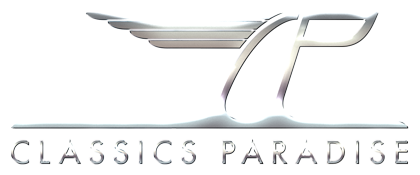Why digitize a parts catalogue?
Restoring a classic car is all about assemblies and parts!
During dismantling, your classic car is broken down into parts. All parts are not always broken down into their complete individual parts, but often they are. When documenting the disassembly and also when assessing the parts and what needs to be done with them (cleaning, reprocessing or perhaps replacing), it is advantageous if they do not always have to be recorded by hand and the original manufacturer number is laboriously found in the catalogue must become. The digitally recorded parts catalog is used for this purpose.
Advantages:
- When parts are recorded during disassembly, parts can be taken directly from the catalogue, saving you the tedious task of entering the manufacturer number and designation.
- A link to the catalog is automatically created. You can display the part in the catalog at any time with just one click.
- With our special function for finding parts from suppliers, you can see with one click which supplier offers this part and at what price.
- During the restoration and assembly, you always have the exploded view at hand.
- The original parts catalogue, for which you may have paid a lot of money, is spared and is not soiled and stressed in the workshop.
Disadvantage:
- Depending on the age and quality of the catalogue, OCR text recognition can be poor or even unusable. The registration then becomes time-consuming and can take several days. Although it's a hassle to capture, you'll quickly find that it's worth the effort. And if you consider the total effort of a restoration, this effort is unique and manageable.
How to digitize a classic car parts list - The efficient way
In the following, we describe how to use Easy Classics to create a parts catalog most efficiently in order to save as much time as possible.
Scan the original catalogue
The basis for entering a parts catalog in Easy Classics is the scanning of the original catalog and, if possible, optical character recognition (OCR) so that texts are also available as such and can be copied.
Read our own report on how best to digitize documents.
If the scanned catalog is available, open it.
Record parts catalog and determine referencing type
Take a good look at the catalog and find out how parts are referenced on the exploded views. These are often consecutive numbers, letters or based on the manufacturer number. Read how to enter a spare parts catalog in Easy Classics.
Capture assemblies
After you have scanned the original catalogue, save each assembly as an individual drawing, preferably in JPG format, and label it as it is labeled in the catalogue.
Now open the parts list editor and enter all assemblies in the tree structure. The most efficient way to do this is:
- First count how many assemblies there are in the original catalogue.
- Right-click the top entry in the tree structure. This is the name of the parts list. Select <Add Group>. A new group is added with a default name.
- Repeat the previous step for each assembly without altering the name and OEM reference of each group.
- At the top of the menu, select the checkbox <Automatically jump to the next group after saving>
- Now select the first group and enter the name and the OEM reference. If you can copy text from the scanned parts catalog, you can copy and paste the assembly names.
- Click Save or type CTRL-S. The data is saved and the next group is automatically selected.
- Repeat this step until you have entered all groups.
- Now select the first group again and add the picture of the assembly. Save the group.
- Repeat this step for all assemblies.
Capture parts
Now comes the hardest part, entering all parts.
- Select the first assembly
- In the right pane of the editor, above the parts list, click
 . The input window for adding parts opens.
. The input window for adding parts opens. - Determine which data you have available or which you would like to collect and specify the data after which data should be saved automatically. For example, if you only enter part number and description, you can select the option <After description> on the right.
- If the scanned parts list with OCR, recognized the texts correctly, you can use the copy and paste method. To do this, click
 . This enables clipboard monitoring.
. This enables clipboard monitoring. - Place the mouse cursor in the part number field.
- Now select the manufacturer number in the scanned parts catalog and copy it with CTRL-C. The number is automatically inserted and the focus is set to the next field, the description.
- Selektieren Sie nun die Beschreibung im Katalog und kopieren Sie diesen wieder mit CTRL-C. Jetzt wird die Beschreibung übernommen und der Datensatz automatisch gespeichert und ein neuer Datensatz vorbereitet.
- You can now repeat these steps for each part.
- At the end of an assembly, check whether all texts or manufacturer numbers have been copied correctly.
If the original catalog cannot recognize any text via OCR, you unfortunately have to enter everything by hand.
Link parts to the exploded view
After all the parts of an assembly have been captured, you can link this to the exploded view so they are easy to see. For more information, read the chapter Parts lists editor.

